We have something for you!
The IBA_GAME | 20.000 BLOCKS is ready for you to play.
Come and create the neighbourhood you want! The virtual grounds of Heidelberg’s Patrick Henry Village await you!
visit: http://www.20000blocks.com
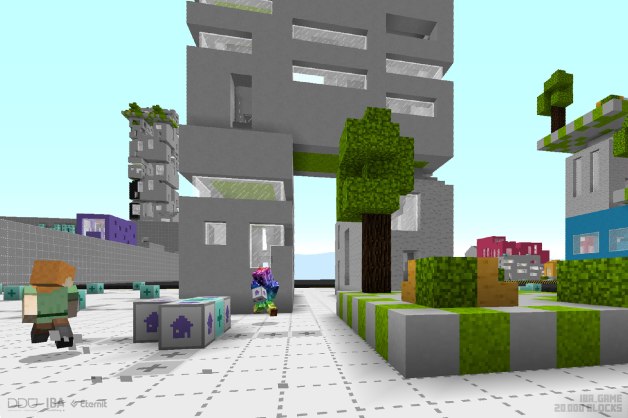
We have something for you!
The IBA_GAME | 20.000 BLOCKS is ready for you to play.
Come and create the neighbourhood you want! The virtual grounds of Heidelberg’s Patrick Henry Village await you!
visit: http://www.20000blocks.com

In this paper we document an early stage of the project 20,000 Blocks and present few observation of which game rules and goals influenced the architectural designs the most.

The paper was published and presented at the international conference ACADIA 2016 at the University of Michigan in Ann Arbor.
Get the paper as a PDF on Academia.edu.
And leave your thoughts and comments below. We’d like to start a discussion what you think the best game mechanics would be for enabling non-architects to create schematic architectural designs.
A short feature story of 20,000 Blocks has been published in the latest issue of the book series IMAGINE by TU Delft.
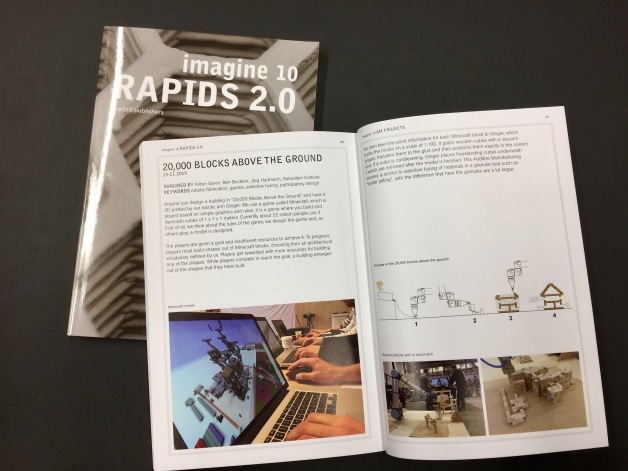 RAPIDS 2.0 presents ideas and technologies for additive manufacturing of buildings and is co-edited by Prof. Dr. Oliver Tessmann from the Digital Design Unit (DDU).
RAPIDS 2.0 presents ideas and technologies for additive manufacturing of buildings and is co-edited by Prof. Dr. Oliver Tessmann from the Digital Design Unit (DDU).
Issued by nai010 publishers, grab a copy!
We have been working hard on getting the new neighbourhood-building game IBA_GAME | 20,000 BLOCKS to be both fun and at the same time useful. Here is a short teaser of what is coming once we go out of beta.
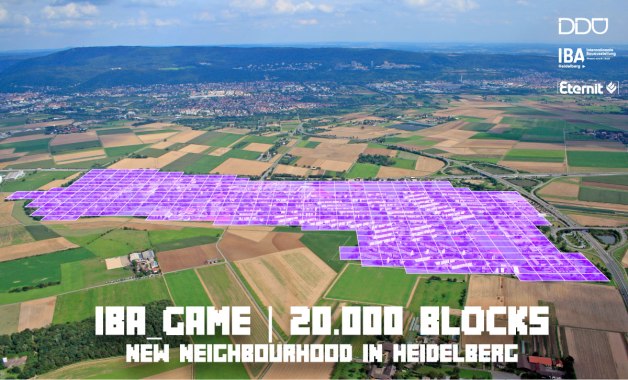
We will collaborate with the Internationale Bauausstellung (IBA) Heidelberg in designing an urban vision for the Patrick Henry Village (PHV) near the historical city of Heidelberg. The 100-hectare area, used until 2013 by the US army, is to become a model for how future cities can house our knowledge-based society.
IBAs – the International Building Exhibitions in Germany – are one of the most influential and innovative urban development instruments in Germany, going back to the beginning of the 20th century. We are very excited to be part of the upcoming IBA Heidelberg, focussing on „knowledge based urbanism“.
Our team at the Digital Design Unit (DDU) will develop a custom version of 20,000 Blocks — the IBA_GAME | 20,000 BLOCKS — with the aim to involve the youngest citizens in envisioning the new PHV. Together with case studies conducted by the world-renowned offices of MVRDV, Carlo Ratti Associatti, ASTOC, Ramboll Liveable Cities Lab and Bohn&Viljoen our contribution will inspire the urban vision by KCAP for the area of this new neighbourhood of Heidelberg.
The game IBA_GAME | 20,000 BLOCKS is made possible by the kind support of Eternit.
We look forward to share with you more updates as the project develops.
Watch Ginger move and glue some of the 20,000 blocks in this video, shot and edited by Andrea Quartara. He has included few highlights from the other projects at SmartGeometry as well.
The video team at SmartGeometry 2016, Marc Webb and Andrew Moxham, made video reports for all clusters at the conference. They have done an awesome job capturing what 20,000 Blocks is about. Check out the video below.
Also don’t forget to see the games from the three zones within 20,000 Blocks here:
Green Zone — Bridging
Orange Zone — How High
Blue zone — Would You Mind Yona Friedman?
At the SmartGeometry 2016 we defined three independent experimental zones within our Minecraft server. That way 20,000 Blocks got the blue, orange and green test fields on which participants could try a different game design, targeted at a specific real-world use case.
In this post we present you the project from the orange zone – HOW HIGH – created by Andrea Quartara, Marc Emmanuelli and Ulrik Montnemery.
To see the projects from the other two zones:
Blue Zone
Green Zone
HOW HIGH turns the players of 20000 Blocks into residential architects. To win the game build 5 houses. The trick is though, you need to build the needed infrastructure and public spaces to be able to create a house.
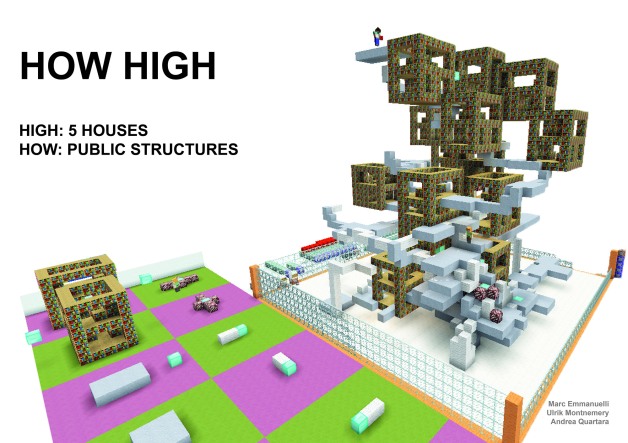
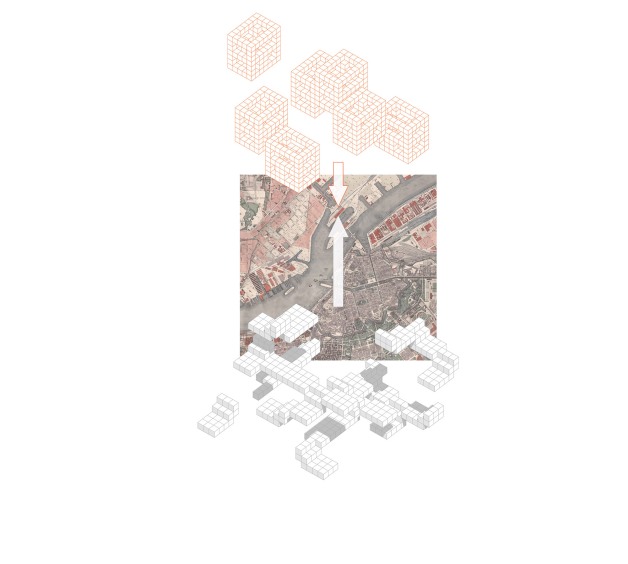
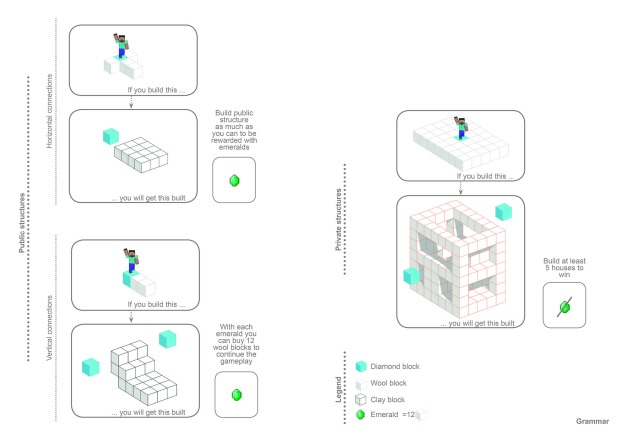
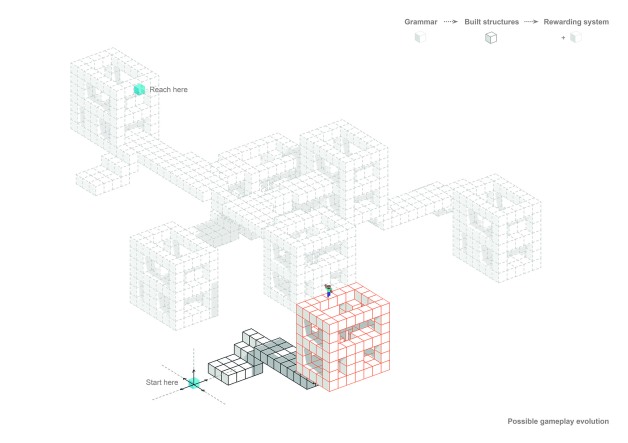
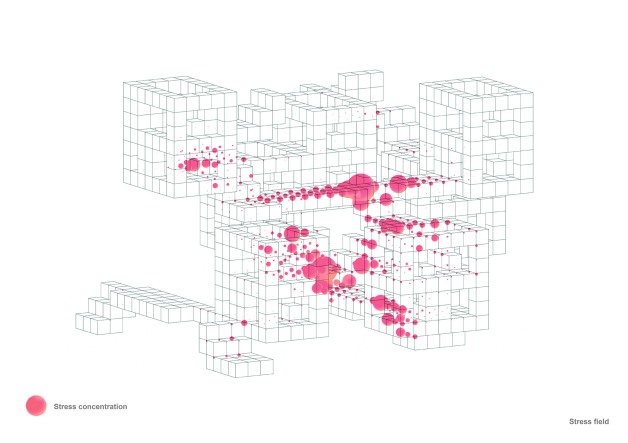
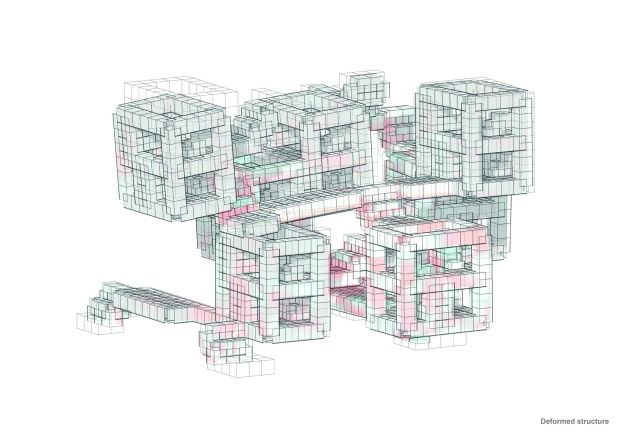
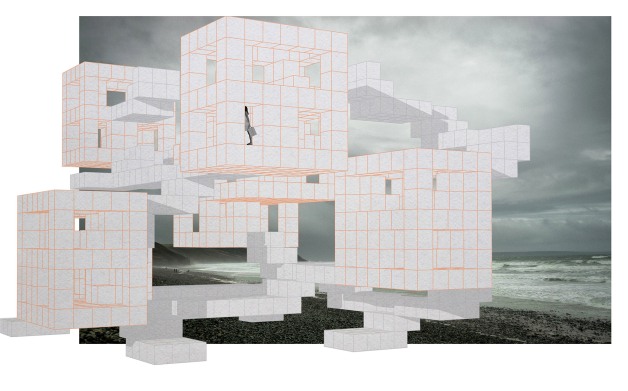
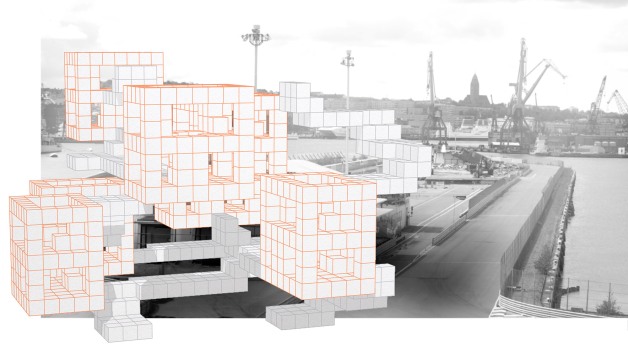
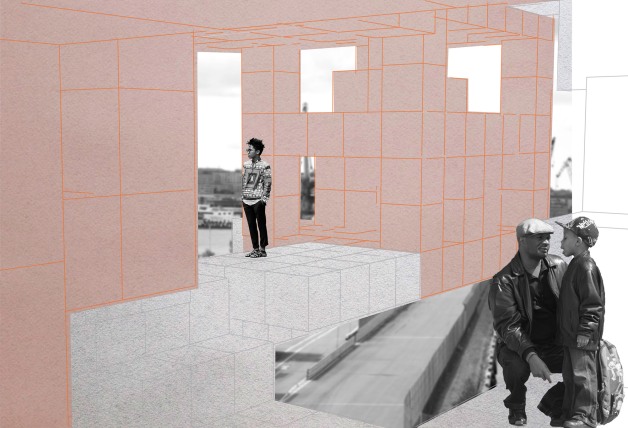
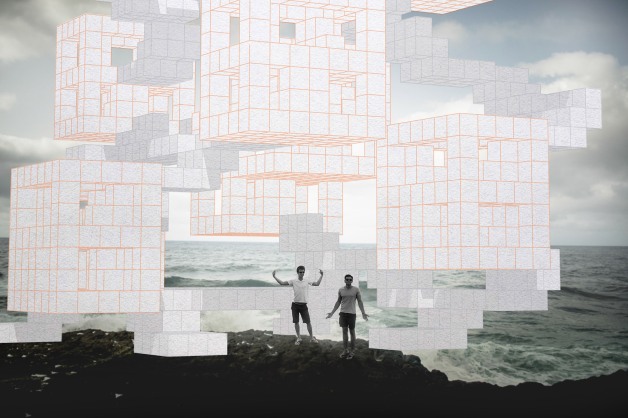
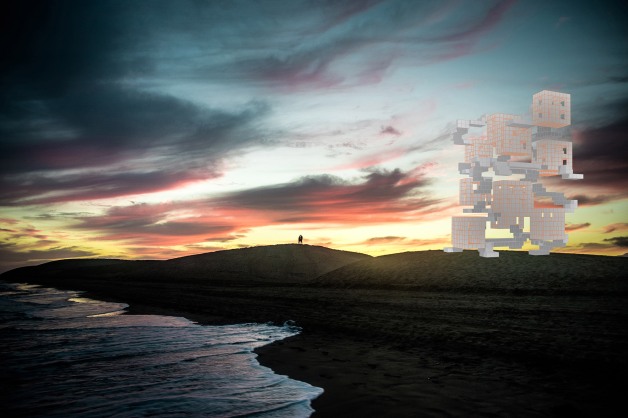
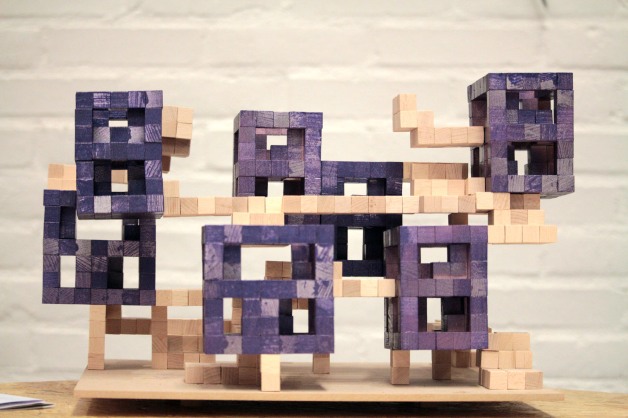
photo: Andrea Quartara
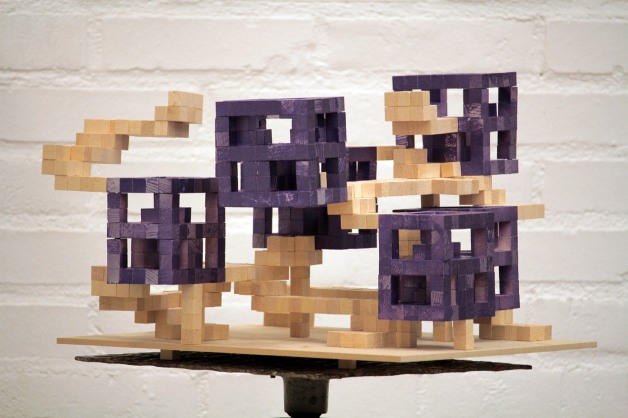
photo: Andrea Quartara
At the SmartGeometry 2016 we defined three independent experimental zones within our Minecraft server. That way 20,000 Blocks got the blue, orange and green test fields on which participants could try a different game design, targeted at a specific real-world use case.
In this post we present you the project from the green zone – BRIDGING – created by Alexander Gösta, Samuel Eliasson and Ashris Choudhury.
To see the projects from the other two zones:
Blue Zone
Orange Zone
BRIDGING is about creating inhabitable structures connecting to areas across an obstacle such as a railroad, a river or an existing building.
BRIDGING can either be played as a competitive two player game or a collaborative four player game. The players are divided by a high wall with a platform on top.
If competitive, the goal is to reach the top platform before your opponent. If collaborative, you play in teams of two and the goal is to connect your bridge before the opponent team does.
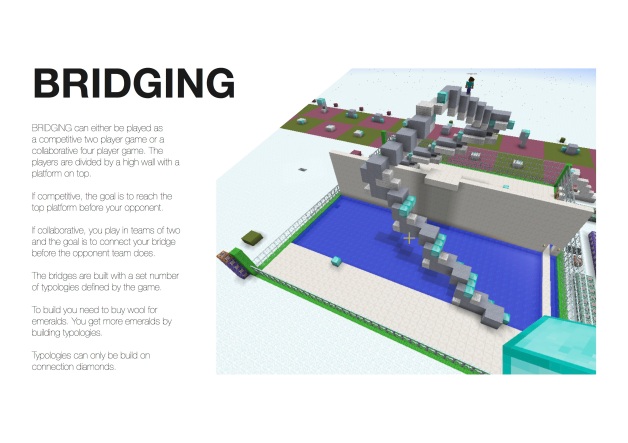
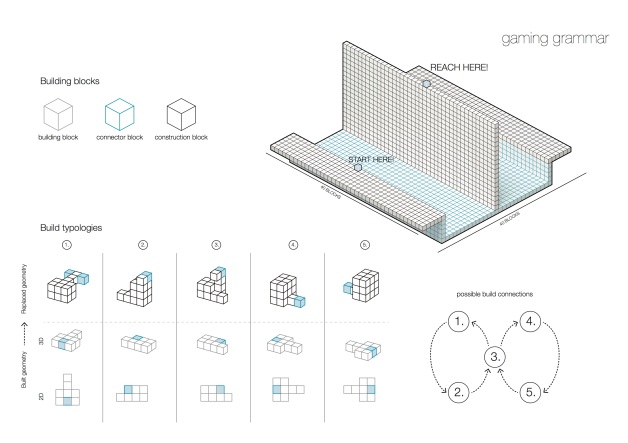
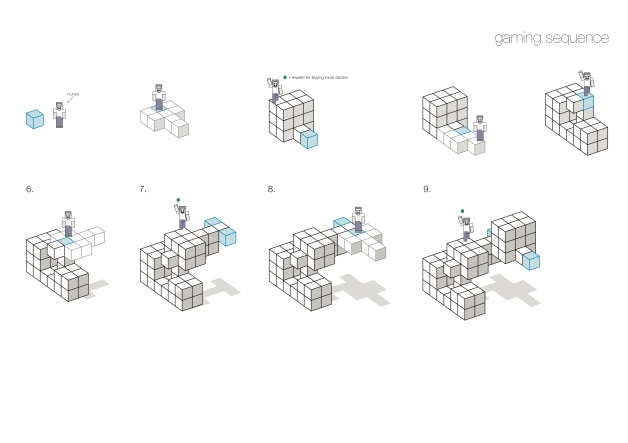
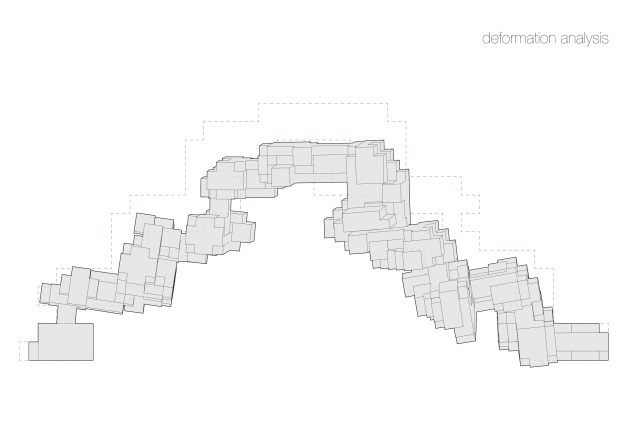

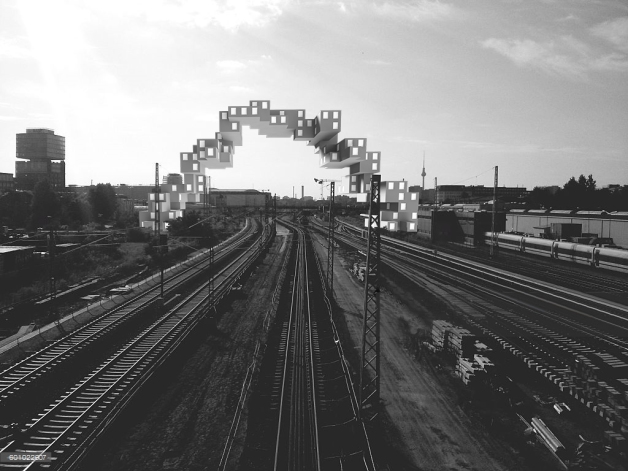
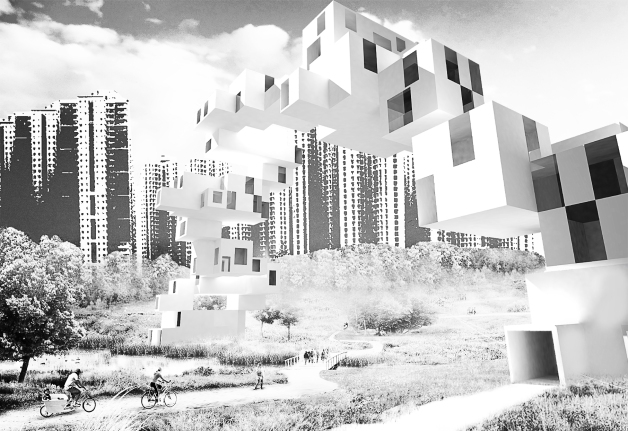
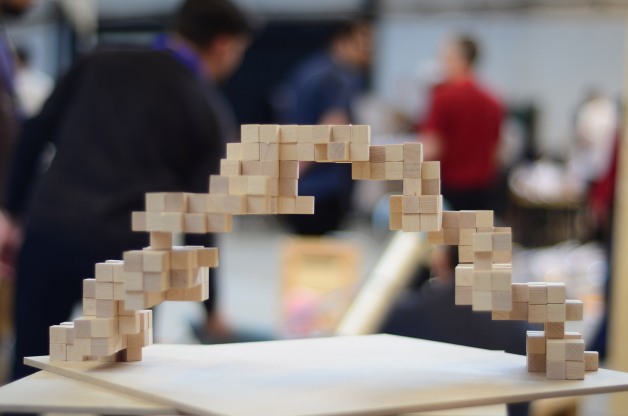
photo: Samuel Eliasson
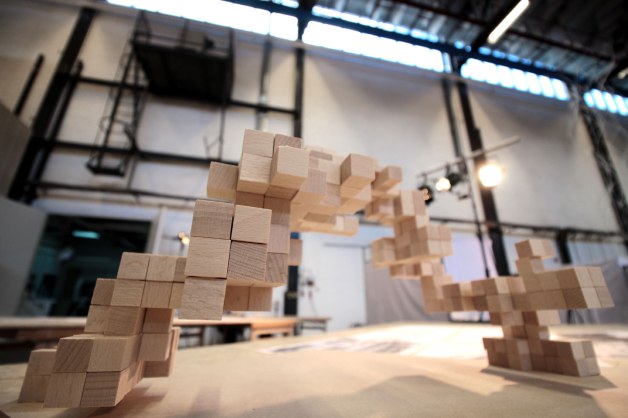
photo: Andrea Quartara
At the SmartGeometry 2016 we defined three independent experimental zones within our Minecraft server. That way 20,000 Blocks got the blue, orange and green test fields on which participants could try a different game design, targeted at a specific real-world use case.
In this post we present you the project from the blue zone – Would You Mind Yona Friedman? – created by Marios Messios and Max Rudolph.
To see the projects from the other two zones:
Green Zone
Orange Zone
It envisions 20,000 Blocks being used to design megastructures overarching the dense centres of todays cities.
We use a game called Minecraft that is played with simple graphics and rules.
The creative and building aspects of Minecraft enable players to build constructions out of tex- tured cubes in a 3D procedurally generated world. It’s a game where you build and demolish cubes of 1x1x1m. Currently about 22 million people use it.
In our cluster, 20000 blocks above the ground, we use Minecraft, Rhino, Grasshoper and Ginger (//female robotic arm) as the end means to pro- duce our models.
First of all we think about the rules, we design the game and as we play the model is designed. By using Rhino we translate the model and do a structural analysis in grasshopper.
We then feed point information to Ginger which grabs the cubes, pushes them to the glue and po- sitions them exactly on the spot and builds this model of ours.
The rules of the game are simple.
Get rewarded by building as many houses as possible and guide the structure to it’s maximum vertical and horizontal growth.
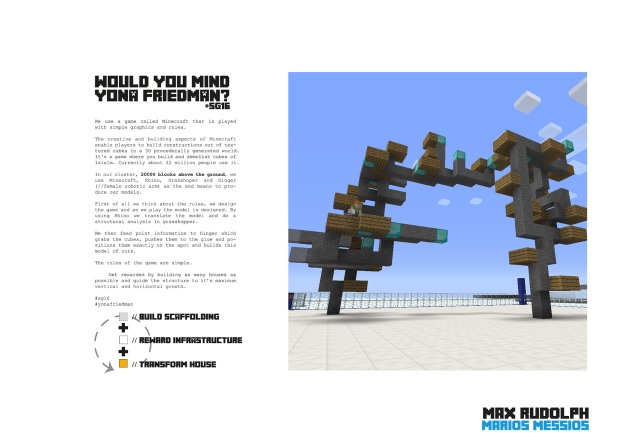
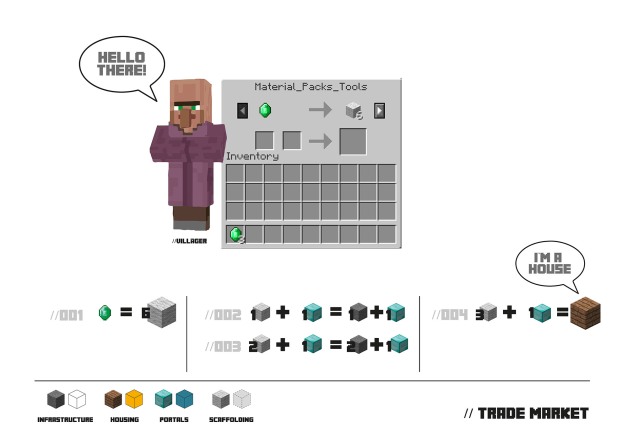
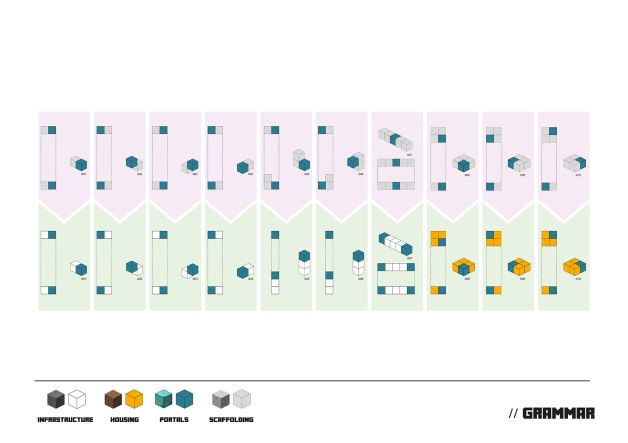
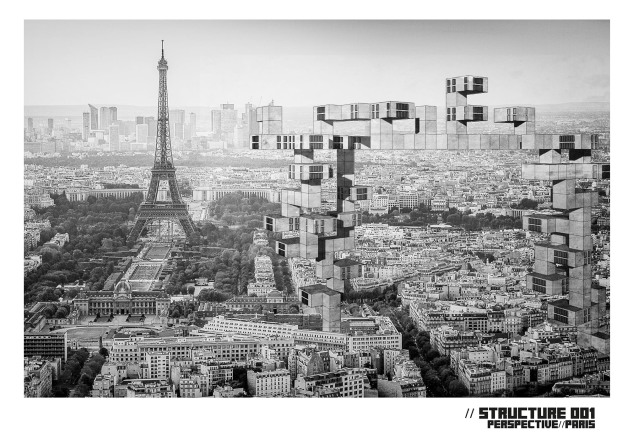
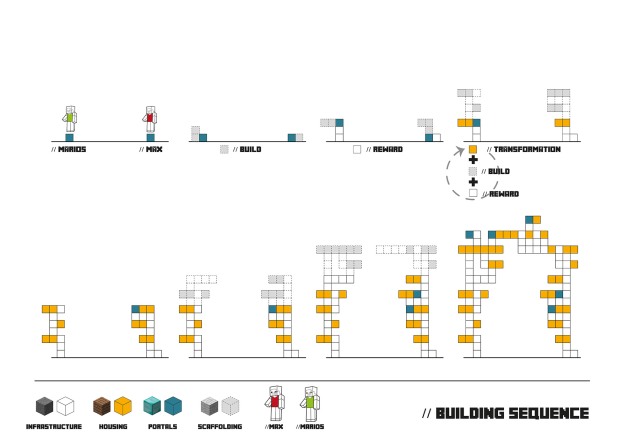
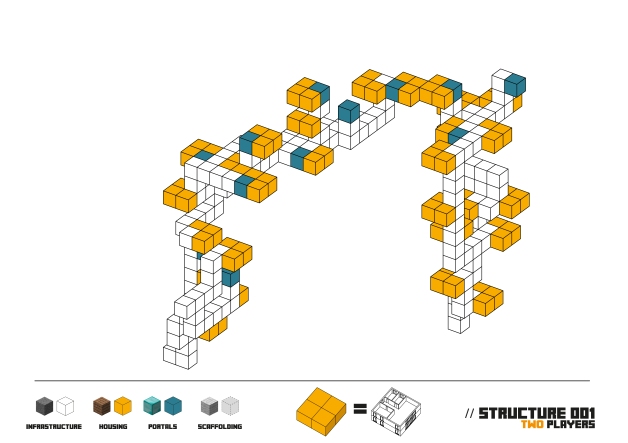
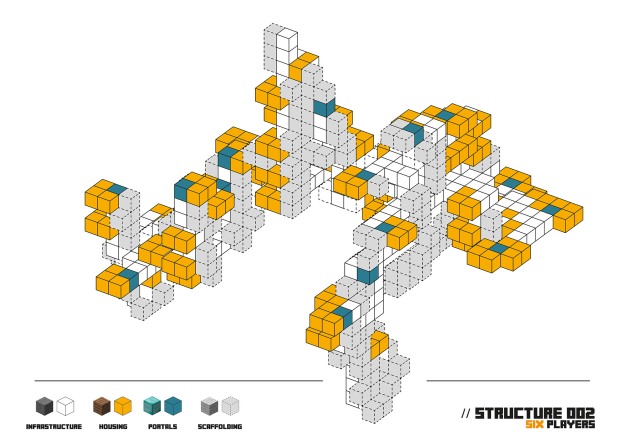
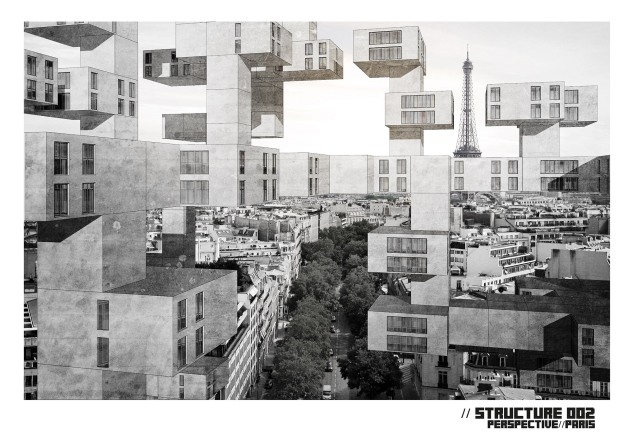
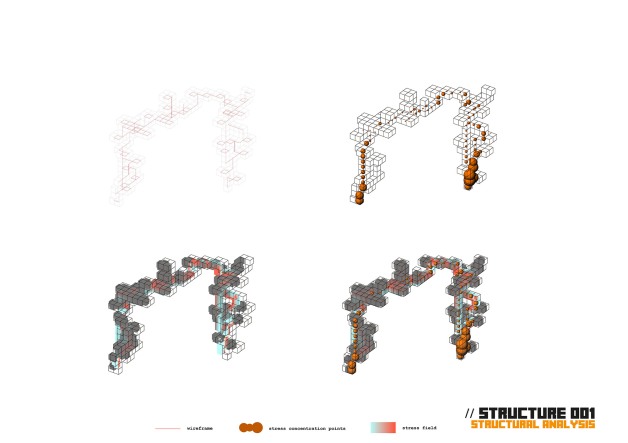
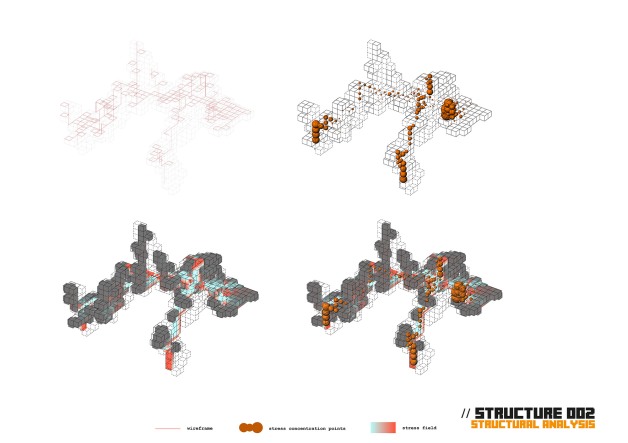
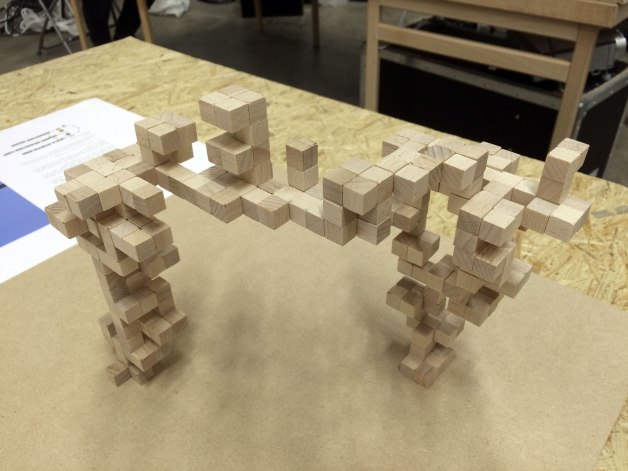
photo: Max Rudolph
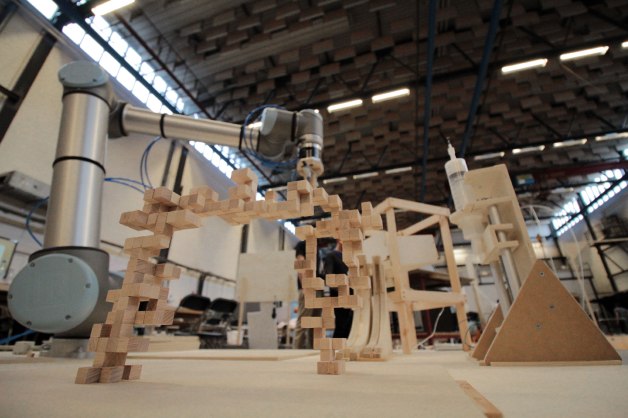
photo: Andrea Quartara